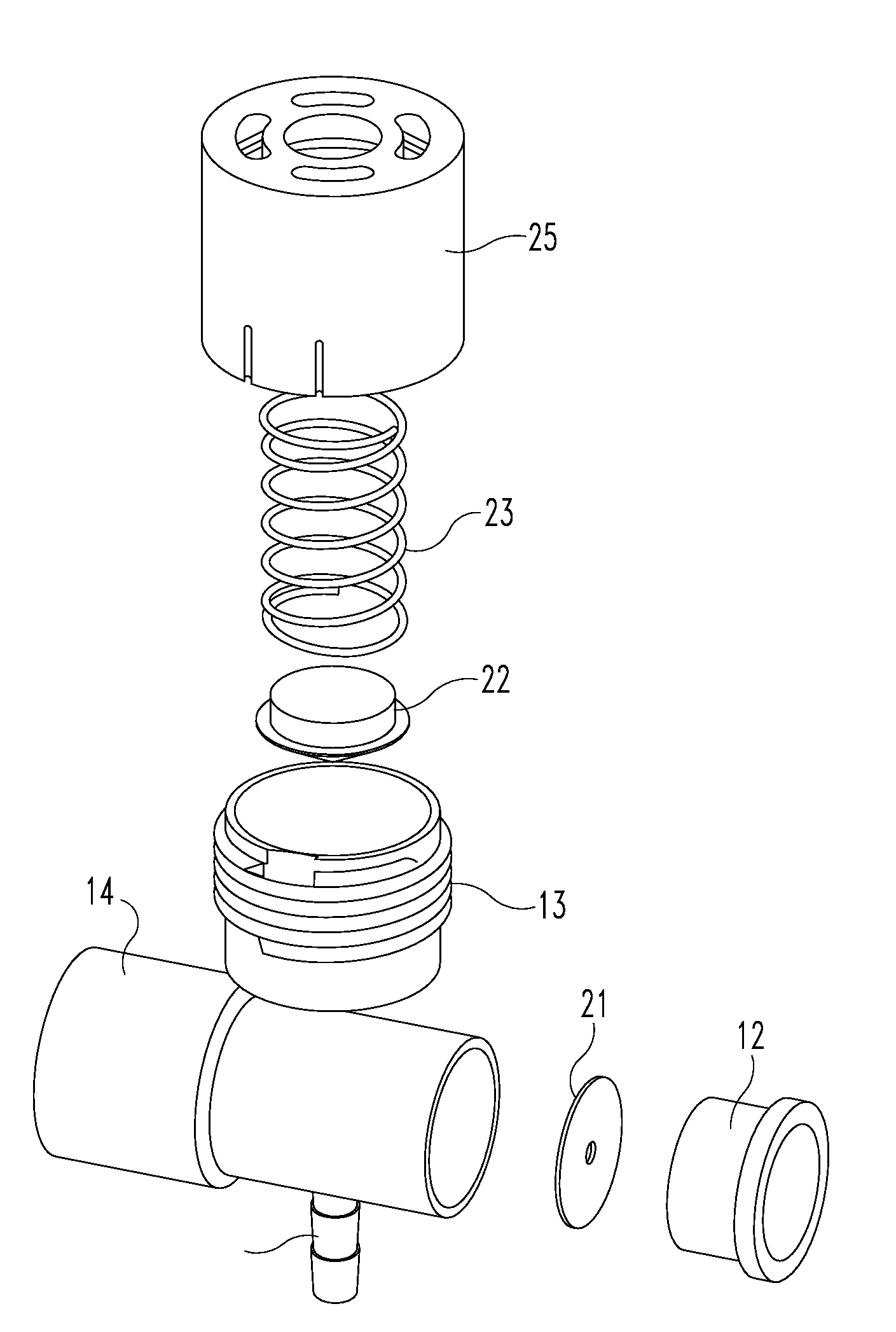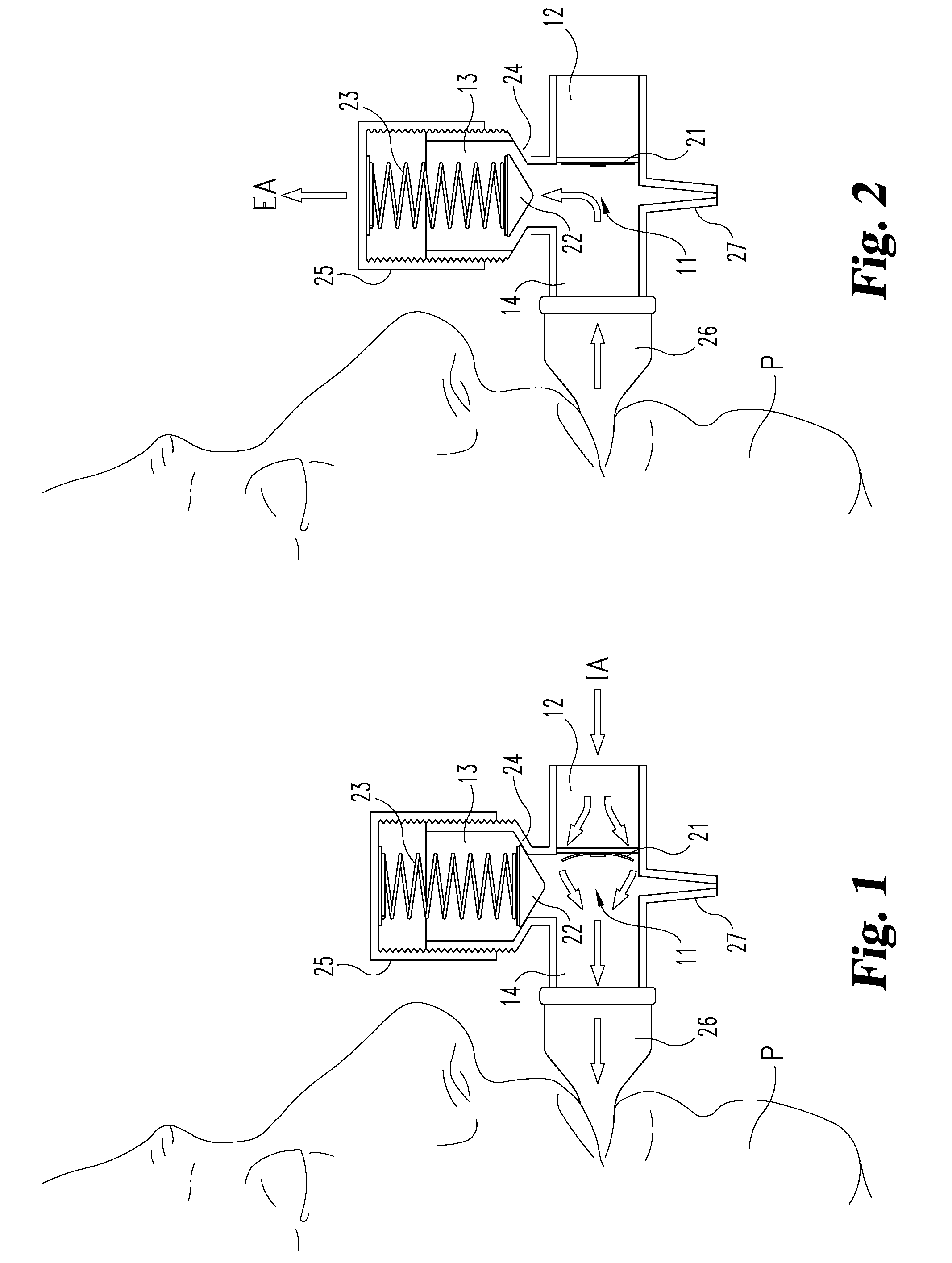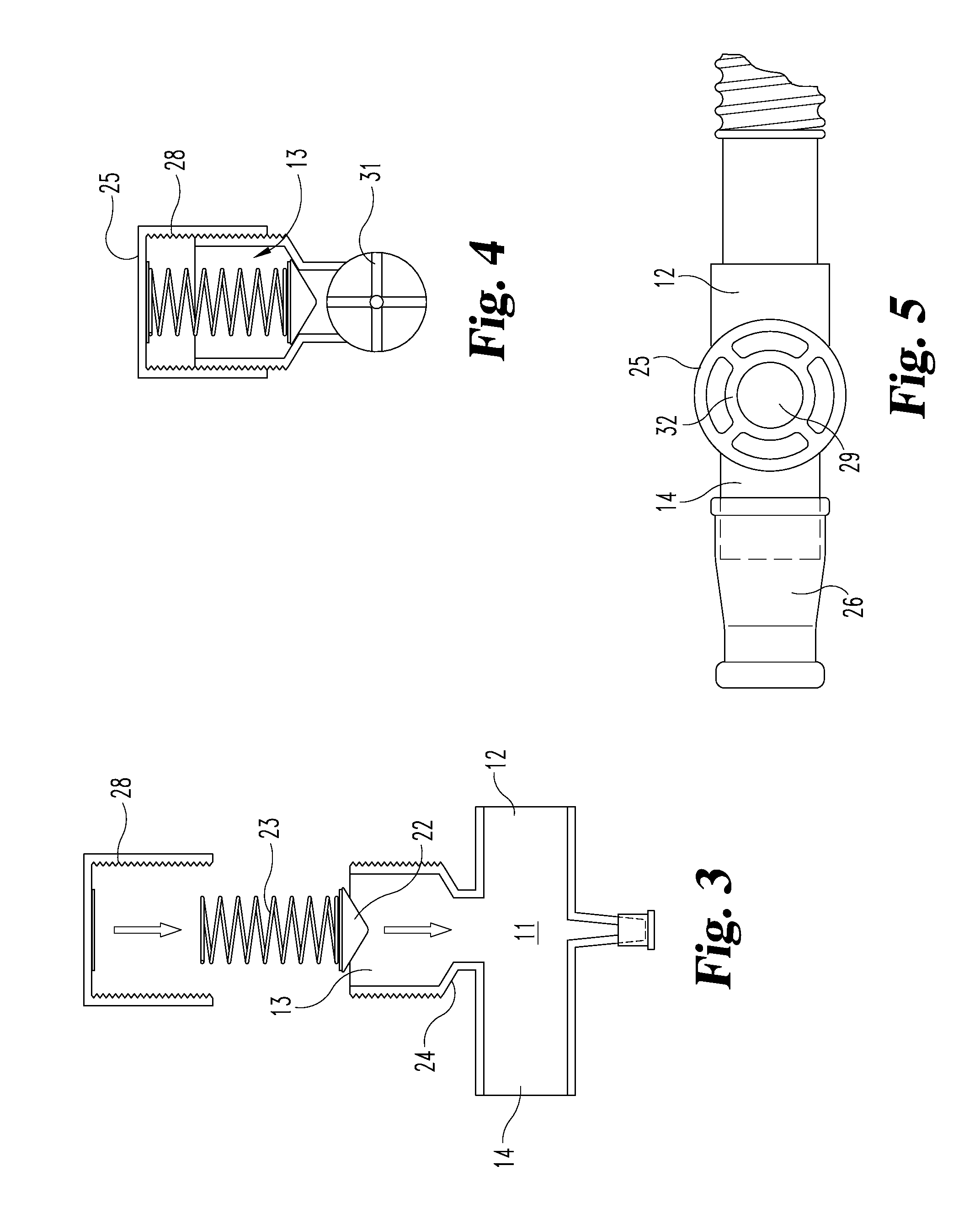Airway pressure control devices
a technology of airway pressure control and airway, which is applied in the direction of inhalators, gymnastics, other medical devices, etc., can solve the problems of increased friction, increased work, and inability to generally exhale with enough force to expand the alveoli,
- Summary
- Abstract
- Description
- Claims
- Application Information
AI Technical Summary
Benefits of technology
Problems solved by technology
Method used
Image
Examples
Embodiment Construction
[0031]For the purposes of promoting an understanding of the principles of the invention, reference will now be made to certain embodiments and specific language will be used to describe the same. It will nevertheless be understood that no limitation of the scope of the invention is thereby intended, with alterations and modifications being contemplated as would normally occur to persons skilled in the art to which the invention relates.
[0032]As indicated above, one aspect of the present invention relates to a device for providing resistance in an air pathway for a patient who is exhaling. In one embodiment the positive pressure airway device comprises:[0033]a) an inhalation passageway for passing air into the device and to a patient when the patient inhales through the device;[0034]b) an exhalation passageway for passing air from a patient out of the device when a patient exhales through the device; and[0035]c) a valve in the exhalation passageway to allow air to flow out through th...
PUM
 Login to View More
Login to View More Abstract
Description
Claims
Application Information
 Login to View More
Login to View More - R&D
- Intellectual Property
- Life Sciences
- Materials
- Tech Scout
- Unparalleled Data Quality
- Higher Quality Content
- 60% Fewer Hallucinations
Browse by: Latest US Patents, China's latest patents, Technical Efficacy Thesaurus, Application Domain, Technology Topic, Popular Technical Reports.
© 2025 PatSnap. All rights reserved.Legal|Privacy policy|Modern Slavery Act Transparency Statement|Sitemap|About US| Contact US: help@patsnap.com



